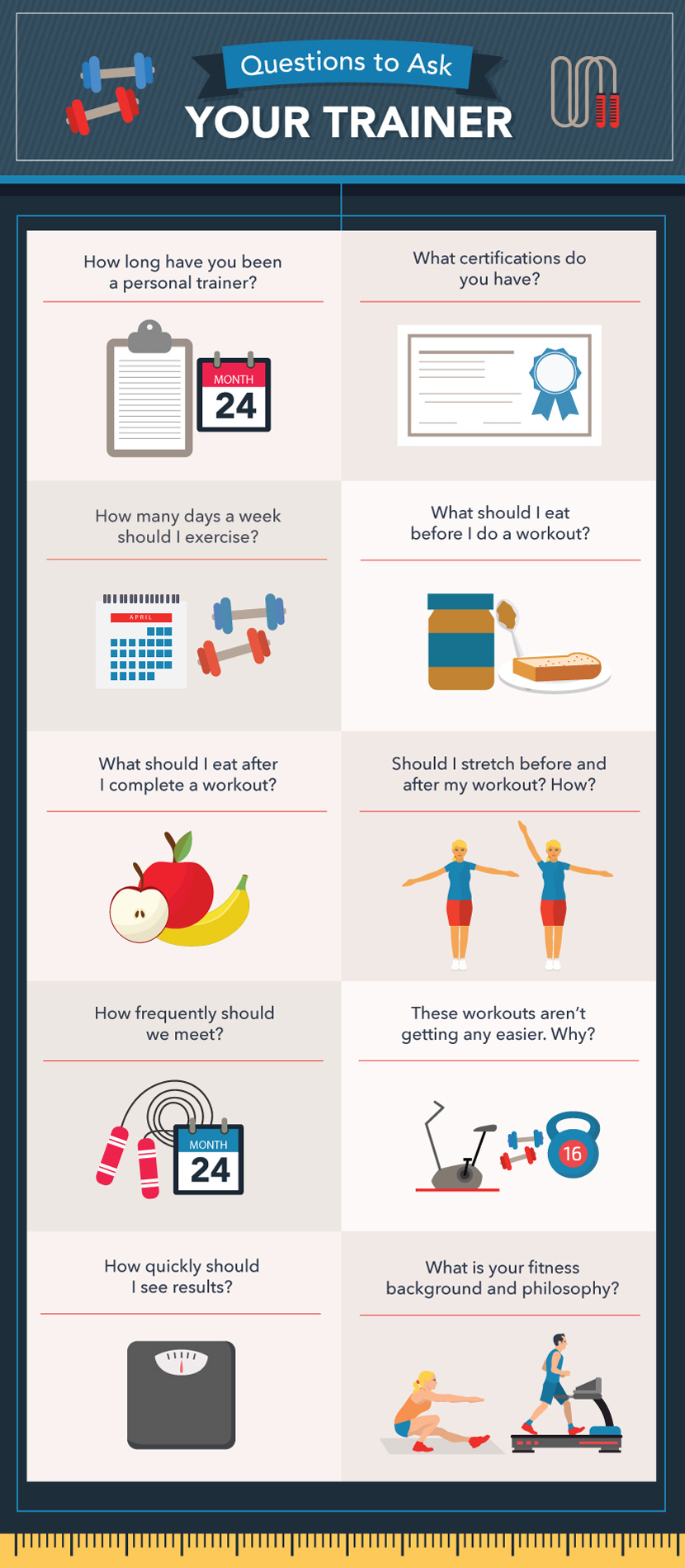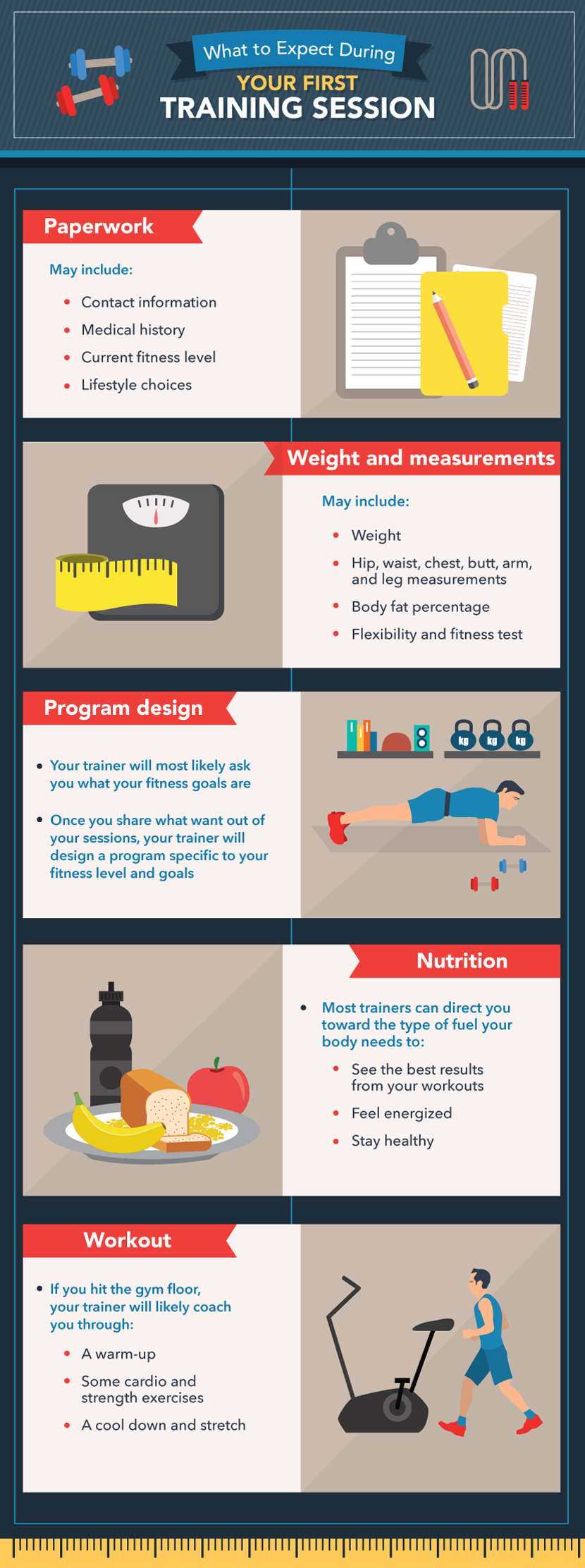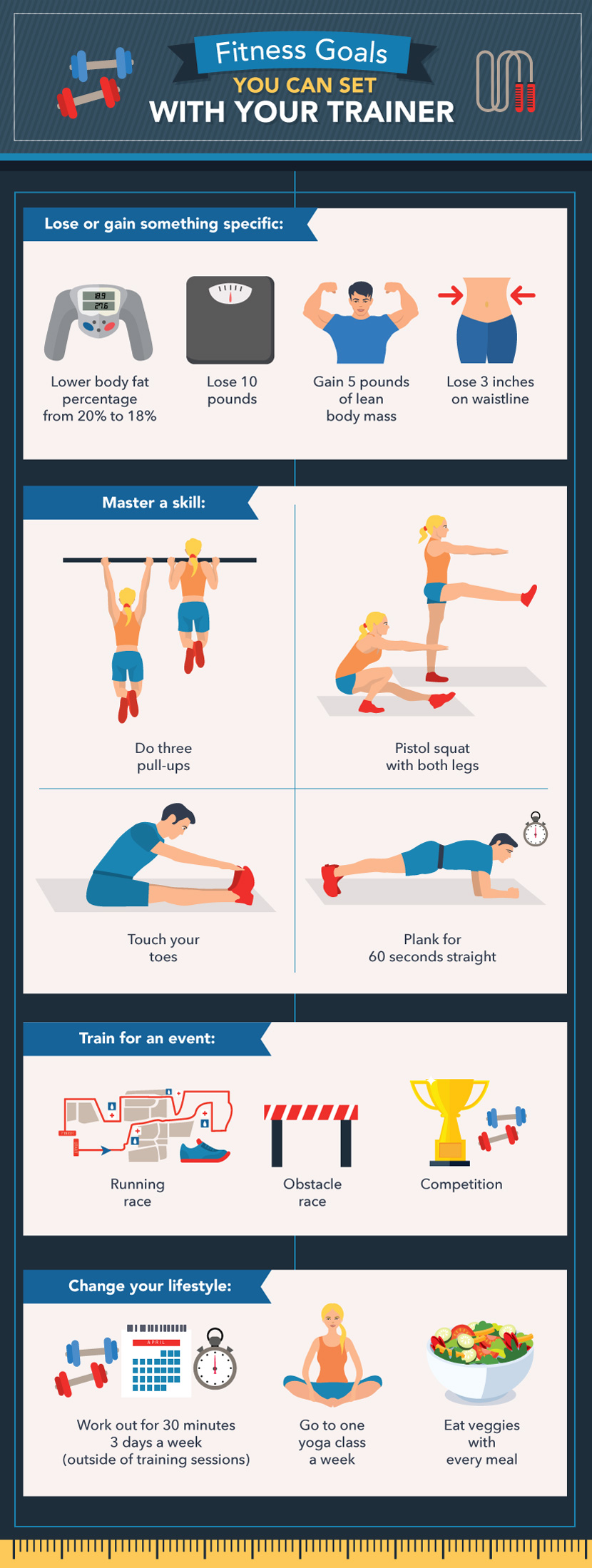First Time with a Personal Trainer? Here’s How to Prepare

New Year’s resolution time is fading in our rearview mirrors. Perhaps you stuck to your commitment to rebound from hours of lounging on the couch with spiked cider with a healthier diet and fitness routine. Or perhaps you might need a little extra help.
Many people decide to invest in a personal trainer to help become more accountable for their fitness goals. Luckily for us, as of 2011, there are more than 231,500 personal trainers in the United States – a 44 percent increase in just 10 years. And with the estimated 30,500 gyms throughout the country, there’s less of an excuse to avoid a workout.
We break down what to expect during your first personal training session, the right questions to ask, how to get the most from your trainer, and factors to consider when it comes to longer-term training. First thing’s first: find the right personal trainer for you.

It’s a Match!
Remember that one size does not fit all; don’t just search for the most in-shape person. There are a number of good questions you should ask trainers before deciding whom to work with.
For starters, make sure a given trainer is certified. Choosing a certified strength and conditioning specialist (CSCS) is critical.2 A degree in exercise science, physical therapy, or nutrition is a great bonus, too. It’s also important to ask how long a personal trainer has been in the business to find out if he or she is a newbie or veteran, although one is not necessarily better than the other. Trainers just come with different techniques and approaches to working out.
Next up: Find out what the trainer’s fitness background is. Are you a runner looking to gain strength, a lifter seeking to increase the number of pounds you can bench, or someone looking for an all-around healthier lifestyle? Certain trainers may share interests and fitness routines, which automatically creates an interesting bond. Similarly, once you determine your specific fitness objectives, you can ask what direct experiences a trainer has had with helping past clients attain goals. And consider seeking out client testimonials on a potential trainer’s website or Facebook page for an outsider’s perspective.
Finally, it doesn’t hurt to ask for a free session. Many gyms, especially if you’re a new member, offer no-cost sessions with a trainer. See if a trainer you’re interested in working with can offer a pro bono session before you make things permanent.
What to Expect during Your First Training Session

Once you find your match made in the gym, the next step is to head in for the first session. You won’t necessarily dive right into kettle bells and pull-ups. Here are a few standard steps you will likely experience before the real fun begins.
Paperwork
There’s no avoiding administrative work, even at the gym. You’ll most likely be asked to fill out some forms with your contact information, medical history, and current fitness level. New client forms may get a bit personal with questions about alcohol consumption and drug use. The goal is to be as honest as possible to help the trainer help you achieve the results you want.
Weight and measurements
This part may not be particularly fun, especially if you’re really looking to overhaul your fitness routine. Yet it’s probably the most important step in your training journey because logging weight and measurements means you can track your progress and quantify each training session. In addition to stepping on the scale, your trainer will likely take measurements of your hips, waist, chest, butt, arms, and legs. He or she may also measure your body fat percentage and conduct a small flexibility and fitness test. Remember: seeing those metrics change makes it all worth it in the end.
Program design
Now we’re getting into the real fun. Your trainer will most likely ask you what your fitness goals are. Think carefully about what you want to get out of training sessions and be as specific as possible. Instead of just “get stronger” or “lose weight,” talk about what muscles you want to tone or how many pounds you want to lose. Be open about fun things such as, “I want to be able to do a pull-up,” or “I want to do 10 push-ups in a row.” Once you’ve shared what you really want out of your sessions, your trainer will design a program specific to your fitness level and goals. Not sure where to start?

Nutrition
It’s a win-win if your trainer is also a registered dietitian, although it’s not a requirement.3 Don’t expect a tailored nutrition plan. That said, trainers can direct you toward the type of fuel your body needs to yield the best results from your workouts, feel energized, and stay healthy. Your personal trainer should be able to provide a 360-degree look at how to attain better health.
Workout
Depending on how long all the other steps take, you’ll either do a short workout or just get an insider scoop at the content of the first workout. If you hit the gym floor, your trainer will likely coach you through a warm-up and some cardio and strength exercises and finish with a cool down and some stretching.
How to Get the Most From Your Trainer
Showing up is just one part of the equation. Here are some tips to ensure you get the most from your personal training experience, especially as it’s a significant time, energy, and financial commitment.
Make sure you have clear goals
Establishing why you’re pursuing personal training is crucial to your success. Make sure to be as specific as possible. It’s also normal to be somewhat unsure of what you want to accomplish; a good personal trainer will help you identify what you want to improve and change.
Show up early
Once your personal trainer establishes a normal warm-up routine, try to get to the gym early so you can do it on your own. (Your trainer doesn’t need to watch you jog on the treadmill for 10 minutes.) This leaves the entire training session, typically one hour, open for the real workout. And this goes without saying: do not be late. If you’re five minutes behind, you will likely cut that time from your workout session.
Strengthen the relationship
Establishing the initial relationship with your personal trainer is vital, but it doesn’t stop there. As you get more comfortable with one another, it’s important to realize the affiliation between personal trainer and trainee is always evolving and can improve. Keep communication lines open: Respect your trainer’s expertise as a professional, but also speak up when something feels off – for instance, if a specific workout makes you unnecessarily sore or if a training session doesn’t even make you sweat. Regularly ask yourself, “Does this person make me better than I do when I work out alone?”
Be honest
Another part of fostering a great relationship with your trainer is to communicate whether you feel sore, tired, or extra energized so your trainer can tweak your workout plan, and you can get the most of out of each session. Make sure to establish how much lead time your trainer needs to alter a workout to create something that will work optimally for you.
Know when to make the next step
The point of having a personal trainer is to accomplish a specific goal and then graduate to the next step. Perhaps this means it’s time to set new goals with a trainer who has a different skill set. Or maybe your budget, priorities, and interests have shifted. What’s critical is to identify when to move on instead of spending time and money on sessions that aren’t the most beneficial for you.
Conclusion
Deciding to hire a personal trainer is empowering, fun, and even a bit scary. But dedicating and investing in one can lead to invaluable rewards, allow you to overcome physical and mental barriers, and provide the real results you want.
Embed the article on your site

Sources:
http://www.nytimes.com/2012/07/01/business/for-personal-trainers-a-boom-fueled-by-a-belt-tightening-age.html?pagewanted=all&_r=1http://www.nsca.com/CSCS_Certification_2/http://www.ideafit.com/fitness-library/the-elephant-in-the-room-nutrition-scope-of-practice 10026131954
Laura Schwecherl
Infografix by: fix.com
Like and Share